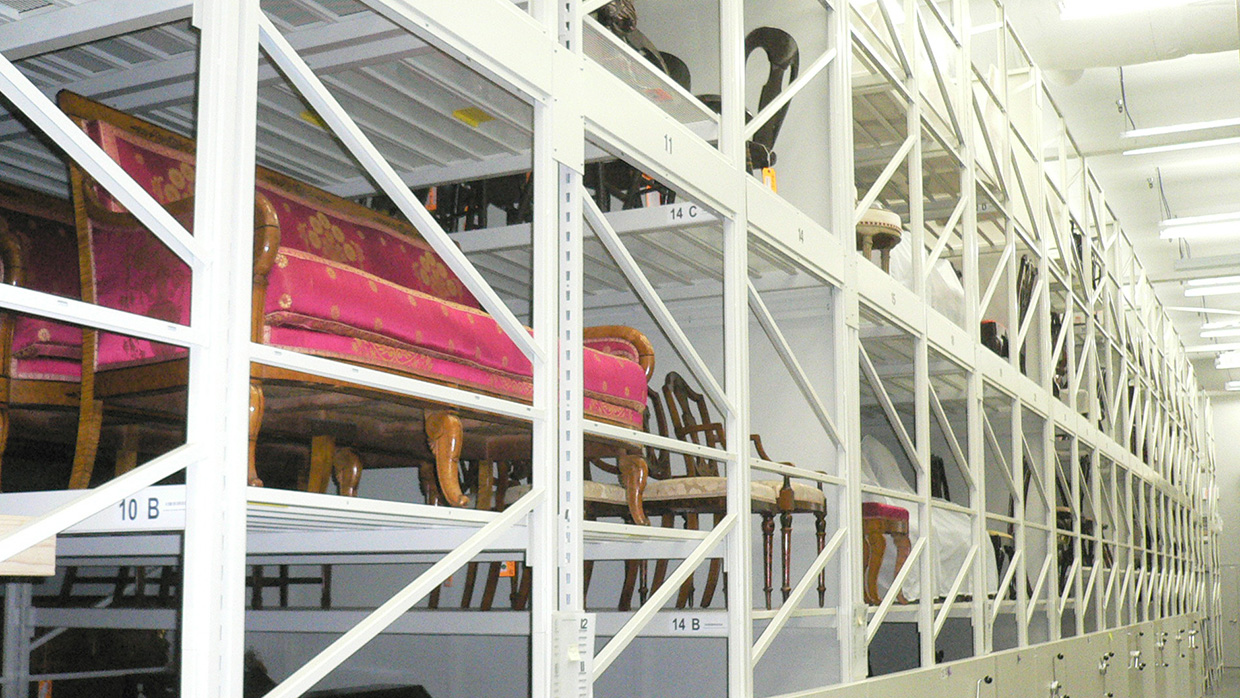
ENOB - PlusEnergy-Depot

Low-energy depot and archive buildings for storing cultural assets with PlusEnergy concepts
A substantial proportion of the collections in German museums, libraries and archives is stored in depots and warehouses. The core social task of each of these institutions is to collect and preserve cultural assets. In the long term, low-energy, inexpensive and simple strategies for depot and archive buildings are needed to ensure the lasting and reliable preservation of cultural assets. In times of ambitious climate targets and declining cultural budgets, suitable storage space for collections is called for that is extendable, quick to erect and viable from an economic and conservation point of view. Against this background, the research consortium is working together with public partner institutions to develop new concepts for safer, cheaper and energy-efficient depot and archive buildings where cultural assets can be stored. It is also supporting the implementation of these concepts in pilot projects.
The aim of the project is to develop a model solution in line with the requirements of preventive conservation for depots and archives with a PlusEnergy standard. The main focus is on prevention, preservation, low construction and operating costs, the minimized use of technology, high energy efficiency and sustainability. To assess the status quo, a history of significant depot and archive buildings is being compiled and prepared for publication in the form of an archive and depot atlas.
For this purpose, measurements are being carried out in various types of existing depot and archive buildings. These buildings have been constructed according to different concepts and are operated in different ways. This phase will be followed by an evaluation of various concepts and models for depot and archive buildings from the perspectives of preservation, building physics and energy, e.g. for the original Cologne model with active natural ventilation or the Schleswig model with passive ventilation.
To prove the impact of building materials and climate control strategies on the indoor climate, various depots and archives will be mathematically simulated. The simulations will enable the effects of different parameters to be ascertained and compared. After implementing the new PlusEnergy-depot concept in a real building, the indoor climate and the energy demand will be studied in-situ under the influence of ventilation and air-conditioning systems, the building envelope and building materials, as well as the interior furnishings. Measurements will be recorded to determine the effects of moisture-buffering building materials, drying times and indoor climate stability.
In addition, fire protection and pest control issues, as well as the organizational aspects of archive and depot buildings will be examined. The collected data on production costs, material consumption and operating costs will be analyzed to determine their cost effectiveness.
Energy-efficient building methods
Within the scope of the project, the following investigations on depot and archive buildings will be conducted:
- detailed climate monitoring (recording of temperature and relative humidity in rooms and on surfaces)
- energy monitoring
- hygrothermal simulation with calculations of different optimization concepts (use of moisture-buffering materials)
- Measurement of the air exchange rate
- Analysis of hazardous substances
- Studies on the impact of materials implemented in the depot / archive building, as well as the goods stored there and containers used to buffer the indoor climate
- Simulations to optimize the indoor climate and energy efficiency
- Development of Plus-Energy concepts for depot and archive buildings
Depot and archive cooperation partners
- Depot, Kunsthalle Schweinfurt
- Klassik Stiftung Weimar
- Main State Archive LHA Magdeburg
- Sonderhausen Palace Museum
- Stiftung Fürst-Pückler-Museum Park und Schloss Branitz
- Thuringian Central State Archive Weimar
Project partners
The four-year BMWi EnOB funding project has been led by the Fraunhofer Institute for Building Physics IBP since November 2015 in cooperation with ModulDepot GmbH, the Brandenburg Technical University Cottbus-Senftenberg and Anhalt University of Applied Sciences.
The project is funded by the Federal Republic of Germany, with the Federal Ministry of Economics and Energy acting as the funding body on the basis of a resolution passed by the German parliament.